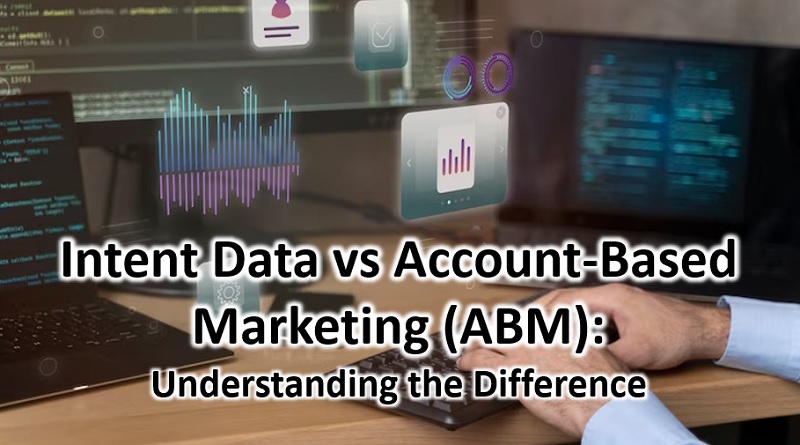Shirofune Enhances Shopify Integration with Google Analytics 4’s Data-Driven Attribution Model
Intent Data vs Account-Based Marketing (ABM): Understanding the Difference

In the world of marketing, two effective strategies have emerged to help companies effectively coordinate their efforts. Intent data and account-based marketing (ABM). Both approaches are aimed at driving business growth, but they work differently and offer unique benefits. Let’s explore the difference between intent data and his ABM.
Intent data:
Intent data is aggregated information about a prospect’s online behavior, indicating the prospect’s level of interest and purchase intent. Various data points such as website visits, content consumption, search queries and social media interactions are analyzed. The core idea of intent data is to identify and target prospects who are actively searching for, or intending to purchase, a particular product or service category.
Benefits of Intent Data:
Improved targeting:
Intent Data allows marketers to focus their efforts on prospects who are already showing a high likelihood of conversion, increasing the efficiency of lead generation campaigns.
Personalization:
By understanding a prospect’s intent, marketers can deliver tailored messages and offers that resonate with their needs, increasing the chances of engagement and conversion.
Shorter sales cycles:
Targeting prospects with high intent accelerates the sales process as they are already in the active evaluation stage, reducing the time and resources required to convert them into customers.
Account-Based Marketing (ABM):
Account-Based Marketing is a strategic approach that focuses on targeting specific accounts or companies rather than individual leads. ABM involves identifying key accounts that align with your ideal customer profile and tailoring personalized marketing messages and campaigns to engage multiple stakeholders within those accounts. The goal is to build strong relationships with your target customers and guide them through a highly personalized buying process.
Benefits of account-based marketing:
Precise targeting:
ABM enables marketers to focus resources on high-value accounts, resulting in more targeted, personalized messages that resonate with key decision makers. .
Coordination with sales team:
ABM facilitates collaboration between marketing and sales teams, coordinating efforts to pursue targeted customers and increasing the likelihood of closing deals.
Account growth and maintenance:
By building relationships with key accounts, ABM not only helps attract new customers, but also focuses on expanding accounts and cultivating long-term partnerships.
Key differences:
- Focus: Intent data focuses on identifying prospective customers with purchasing intent, while ABM targets specific accounts or companies.
- Scope: Intent data can be used in a variety of marketing strategies, but ABM is a holistic approach that includes personalized marketing for target accounts.
- Level of personalization: Intent data enables personalized messaging based on prospect behavior, and ABM delivers highly customized campaigns to multiple stakeholders within a target account.
In summary, intent data and his ABM each have their merits, but serve different purposes. Intent data helps identify individual high-intent prospects and enables personalized targeting. ABM, on the other hand, focuses on building relationships with specific accounts through a customized marketing approach. By understanding the differences, marketers can choose the most appropriate strategy or combine both to maximize their lead generation and revenue growth efforts.




